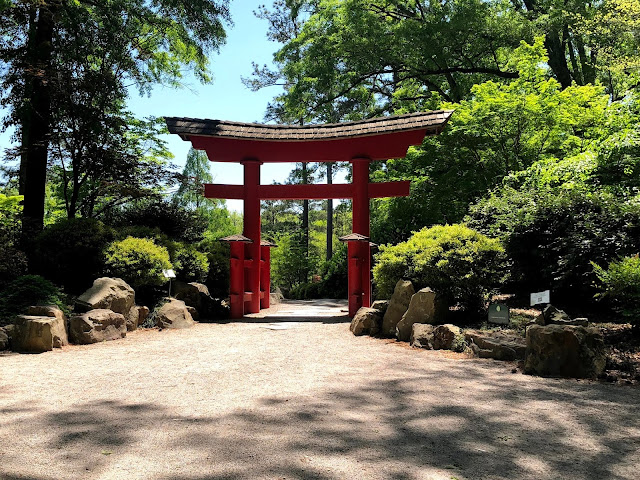Dianne and I recently visited the Birmingham Botanical Gardens on a wonderful spring day with blue skies and temperatures in the mid-sixties. This visit was our first one in many years. Since we arrived around noon, the first thing we did was eat lunch outside at the Gardens Cafe. The shrimp and grits and soups were excellent. Then we began to explore.
Below are some of the photos I took and some commentary. The Gardens are made up of more than 30 specific areas, such as the Rose Garden, Japanese Garden and the Conservatory. The three broad categories are Collections, Nature and Culture. The Gardens also have an art gallery, a library and a plant information center.
One thing we missed because I didn't think of it was the Moon Tree, an American sycamore. That's pretty embarrassing since I've written a blog post on "Alabama's Moon Trees". Sheesh. Maybe next time!
Birmingham Mayor Jimmy Morgan was a driving force behind the Gardens' development; planning began in 1960 and the Conservatory opened in December 1962. Another Morgan project was the Birmingham Zoo.
You can read more history here. A Flickr group with thousands of Gardens photos can be found here. The summer 2011 issue of Alabama Heritage included an article by Bob Wendorf about the history and meanings of the Japanese Garden.
We entered here at Blount Plaza, just across from the parking lot and past the gift shop and cafe.
I'm always up for looking at a map.
Blount Plaza was dedicated in 1988 and this red granite sculpture, "Granite Garden" by Jesus Moroles was installed. Moroles [1950-2015] was known for his large, abstract works in granite.
What's a botanical garden in Birmingham, Alabama, without a reproduction of Giuseppi Moretti's creation, the largest cast iron statue in the world? This one is part of the "Vulcans on Parade" project that placed various such statues around the community.
We explored the Conservatory at some length, since we were all alone there for most of our walk through it. The structure was designed by Henry Teuscher, a Canadian glasshouse designer and resembles the one he designed for the Montreal Botanical Gardens.
The Cacti Collection offers a wide variety of these fascinating plants.
This path to the Japanese Garden is a pleasant, shaded walk.
The 7.5 acre Japanese Garden was formally opened by the Japanese Ambassador to the U.S. in 1967. This location features such elements as a tea garden, bonsai house, koi pond and various meditative spaces.
The pond at the Japanese Garden has many large and colorful koi and numerous painted turtles. A Gardens volunteer told us their oldest koi was some 25 years old. We also got to see a large soft shell turtle and a large, plain old carp.
A new raised walkway takes you through the bamboo stand, a quiet place despite being only yards from Cahaba Road.
Ah, what's a bamboo stand without a Southern pine in it?


























